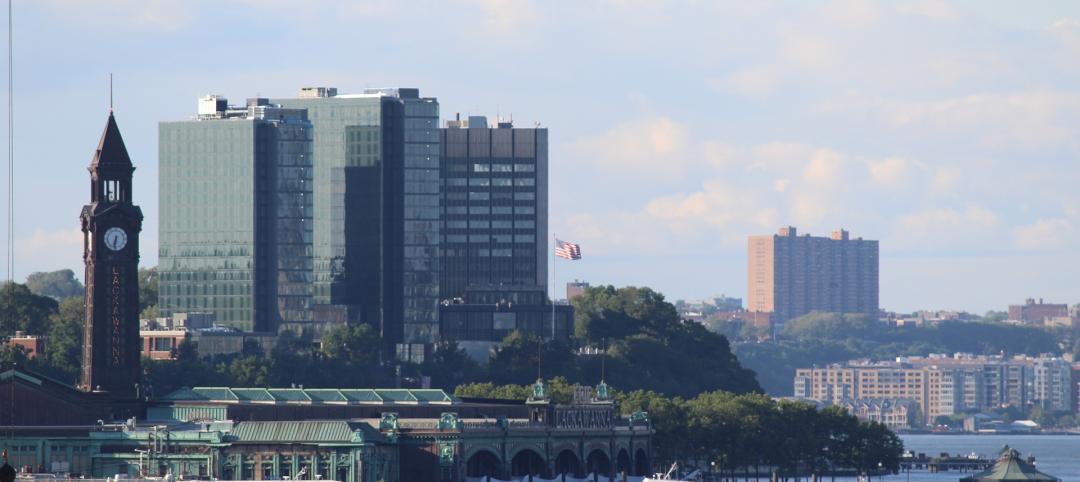Making buildings healthier—through research, code changes, and incentives—is what the National Institute of Building Sciences (NIBS) recommends in its eight-page 2020 Moving Forward Report that the Institute’s Consultative Council of building community leaders has just published.
The report posits that Americans spend 90% of their time indoors, on average, a dynamic that was complicated by the COVID-19 virus. Ensuring that spaces where people work and live are healthy “should be seen as a fundamental pillar of public health and community resilience,” the report states.
The paper focuses on three components of healthy buildings:
•Indoor environmental quality
•Designs that promote health
•The transfer of knowledge between building owners and public health officials
The indoor environment presents unique risks to building occupants, and varies greatly by building type, operations, and location. The report cites studies that show harmful contaminants present indoors at concentrations two to five times higher than outdoors. A recent study of 3,000 people across 40 buildings, by the Centers for Disease Control and Prevention, found that 57% of sickness can be attributed to poor ventilation.
The pandemic accentuated the need for “clean, properly ventilated, and well-filtered air [as] critical to health occupants at all times.”
The report went on to say that “healthy buildings are a critical component of our national infrastructure, and should be intricately entwined with the concepts of resilience and social equity, both on a building by building basis and in the surrounding community. Building owners and public health officials should work with planners, architects, and designers to ensure that sound practices in building design and resilience are core components of community development.”
INVESTING IN AMERICA’S FUTURE HEALTH

Harvard Business Review recently published this grid of how healthy buildings can be measured.
Among the NIBS Council’s recommendations to the Biden Administration are the following:
•The Administration, U.S. Department of Energy (DOE), The Centers for Disease Control and Prevention (CDC), U.S. Environmental Protection Agency (EPA), National Institute of Standards and Technology (NIST) and other relevant federal agencies should increase investment into critical research on the impacts of indoor environmental quality (IEQ) and resilience on health and productivity. Of particular importance is research into how retrofits to the nation’s existing building stock can be used to improve IEQ.
•Federal agencies, including DOE, NIST, EPA, General Services Administration (GSA), and United States Department of Housing and Urban Development (HUD), should support research aimed at identifying improvements to building codes and other criteria that can provide cost-effective approaches to enhanced building performance. This should include opportunities to shorten the regulatory and code development process, and enable it to be more anticipatory of current and future disruptions to public health.
•Congress, U.S. Department of Transportation, HUD, DOE, Federal Emergency Management Agency and EPA, with input from the community-based organizations, advocates, and the private sector, should identify and enact policies, including incentive programs, that encourage building owners and operators to invest in critical activities that promote healthy IEQ. Clean water, healthy high-performing buildings, clean interior and exterior air, and fair and equitable access to healthy and resilient places are critical components of our nation’s infrastructure. Particular incentive should be given to supporting improvements in disadvantaged communities or populations that are impacted by flaws in existing structures, those constructed with unsafe or toxic materials, or that present unsafe living or working conditions to occupants.
A SHIFT TOWARD SOCIAL EQUITY
NIBS releases a Moving Forward report every year. To that end, last December the Consultative Council held a CEO Roundtable entitled “Improving the Workforce of the Built Environment through Social Equity.” The roundtable discussed the current state of diversity, equity, and inclusion (DEI) within the building industry and how leaders present could help drive the industry forward. This included the need to develop survey work related to DEI to inform industry activities, develop core metrics for tracking progress, and partner with core industry stakeholders to drive critical DEI initiatives.
Throughout 2021, the Consultative Council will lead these efforts to affect positive change in diversity, equity, and inclusion in our workforce and the larger built environment.
Related Stories
75 Top Building Products | Dec 13, 2023
75 top building products for 2023
From a bladeless rooftop wind energy system, to a troffer light fixture with built-in continuous visible light disinfection, innovation is plentiful in Building Design+Construction's annual 75 Top Products report.
Codes and Standards | Nov 27, 2023
Hoboken, N.J.’s street design policies are saving lives
Transportation policies enacted in Hoboken, N.J. over the past several years are paying off in the form of fewer pedestrian deaths and injuries. The city has adopted daylighting, bike lanes, lower speed limits, and intersection redesigns to make its roads safer.
Resiliency | Nov 27, 2023
All levels of government need to act to cope with climate-driven flooding and sea level rise
The latest National Climate Assessment highlights the need for local, state, and federal governments to adopt policies to mitigate the effects of climate-driven flooding and sea level rise, according to a policy expert with the National Resources Defense Council.
Resiliency | Nov 16, 2023
How inclusive design supports resilience and climate preparedness
Gail Napell, AIA, LEED AP BD+C, shares five tips and examples of inclusive design across a variety of building sectors.
Codes and Standards | Nov 10, 2023
Washington state building codes to protect structures from wildfire provoke controversy
New building codes in Washington state intended to protect structures from wildfires are provoking backlash from builders, cities, and environmentalists. Critics charge that the rules that are scheduled to take effect March 15 are confusing, will increase housing costs, and could cause too many trees to be cut down.
Sustainability | Nov 1, 2023
Researchers create building air leakage detection system using a camera in real time
Researchers at the U.S. Department of Energy’s Oak Ridge National Laboratory have developed a system that uses a camera to detect air leakage from buildings in real time.
Resiliency | Oct 19, 2023
Jacksonville unveils 50-year strategy for resiliency to flooding, extreme heat, wildfires
The City of Jacksonville, Fla., recently released plans for Resilient Jacksonville, a 50-year resiliency strategy to reduce the risks from flooding, hurricanes, excessive heat, and wildfires, and to respond better to those events. The plan includes ways to stop the St. Johns River from flooding vulnerable neighborhoods, including those prone to flooding during heavy rain or hurricanes.
Engineers | Oct 12, 2023
Building science: Considering steel sheet piles for semi-permanent or permanent subsurface water control for below-grade building spaces
For projects that do not include moisture-sensitive below-grade spaces, project teams sometimes rely on sheet piles alone for reduction of subsurface water. Experts from Simpson Gumpertz & Heger explore this sheet pile “water management wall” approach.
Urban Planning | Oct 12, 2023
Top 10 'future-ready' cities
With rising climate dilemmas, breakthroughs in technology, and aging infrastructure, the needs of our cities cannot be solved with a single silver bullet. This Point2 report compared the country's top cities over a variety of metrics.
Building Materials | Oct 2, 2023
Purdue engineers develop intelligent architected materials
Purdue University civil engineers have developed innovative materials that can dissipate energy caused by various physical stresses without sustaining permanent damage.

















